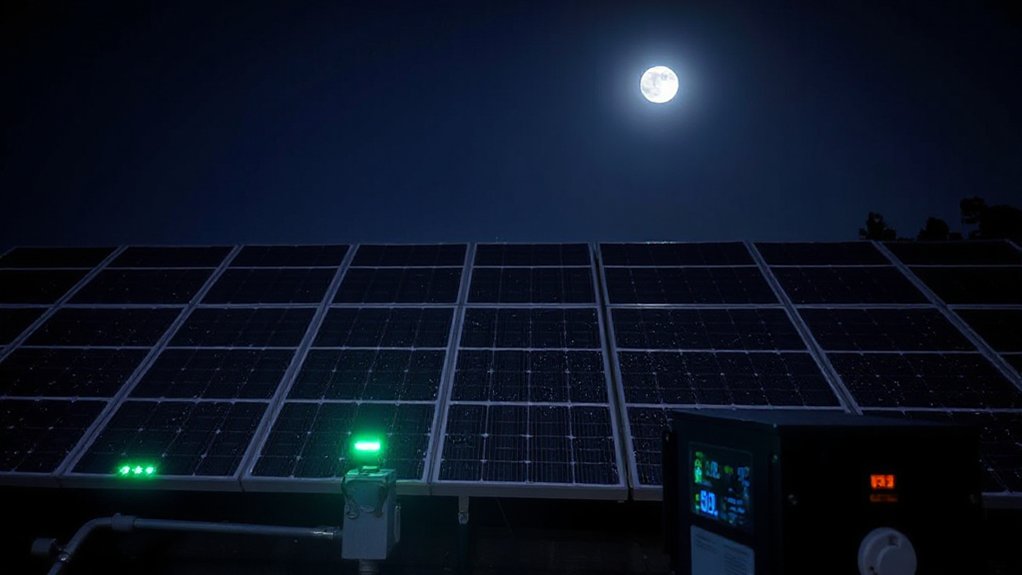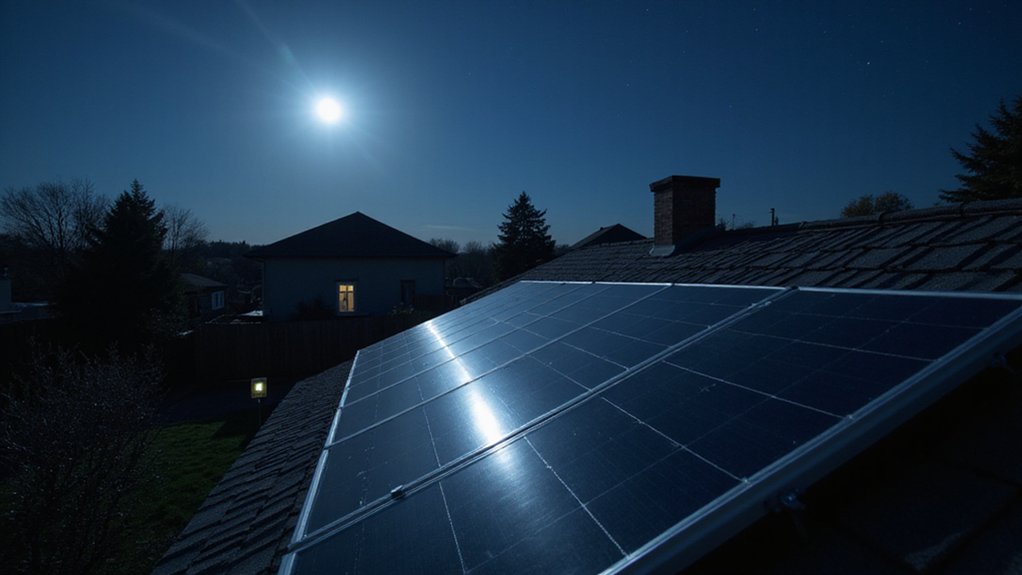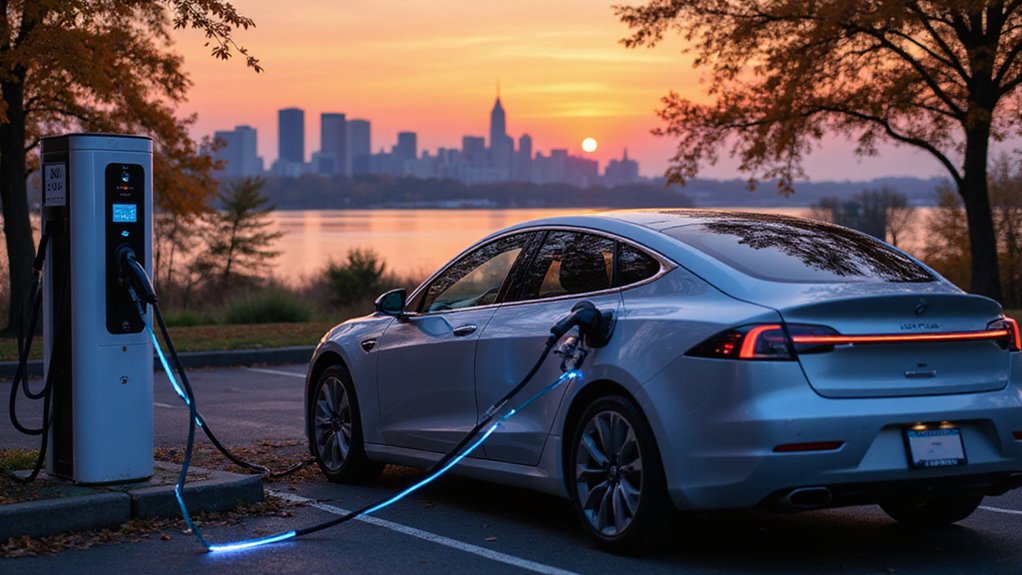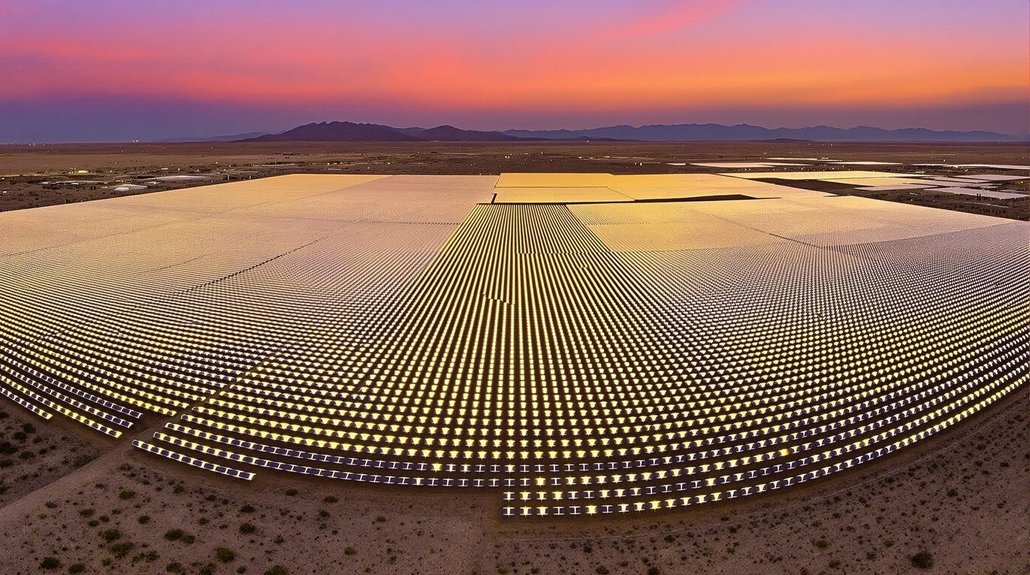Solar panels don’t generate meaningful electricity from moonlight. Period. Moonlight is just reflected sunlight at 1/400,000th the intensity – way too weak for solar cells to function. A 300-watt panel might produce a pathetic 1 watt under a full moon, if that. Most inverters simply shut down, laughing at such pitiful current. It’s physics, not technology failure. Battery storage remains the only practical solution for nighttime solar power. The real transformation happens elsewhere.

While the romantic glow of moonlight has inspired poets for centuries, it’s doing precious little for your solar panels. That’s right. The mystical silver light bathing your rooftop array is practically useless for energy production. Hard truth.
Moonlight is just reflected sunlight, but absurdly diluted. We’re talking about 1/400,000th the intensity of direct sunlight. Your 300-watt solar panel? Under a perfect full moon, it might—might—generate a single watt of electricity. Congratulations. You can’t even power a nightlight with that.
The physics simply aren’t cooperating. Solar panels need a certain threshold of light intensity to efficiently convert photons into electricity. Moonlight falls pathetically short. Those silicon photovoltaic cells that enthusiastically soak up sunshine during the day just yawn at moonlight. They’re barely awake.
Physics demands intensity that moonlight can’t deliver. Solar cells dozing under weak lunar rays hardly notice they’re being illuminated.
Let’s get statistical. Sunlight delivers about 100,000 lux of illumination, while a full moon offers a measly 0.25 lux. The result? Your panels achieve approximately 0.3% of their daytime production. Not 30%, not 3%—0.3%. That’s like trying to fill a swimming pool with an eyedropper.
Current solar technology just isn’t built for ultra-low light conditions. Most modern inverters won’t even register the minuscule current generated under moonlight—they simply shut off. It’s too insignificant to bother with. Mother Nature doesn’t do participation trophies.
The night-time solution isn’t looking up at the moon—it’s looking at batteries. Energy storage systems capture excess daylight production for when the sun sets. That’s the real transformation. Store now, use later. Many homeowners are discovering that solar battery storage can provide complete energy independence, eliminating reliance on the grid entirely. Effective energy management solutions are essential for maximizing the use of solar power during all hours.
Scientists are researching new materials for low-light harvesting, but commercial viability remains distant. For now, that romantic moonlight will continue inspiring poetry, not power production. Your solar panels are fundamentally taking a nightly siesta, and no amount of moonbeams will change that. Sorry to burst your lunar bubble.









